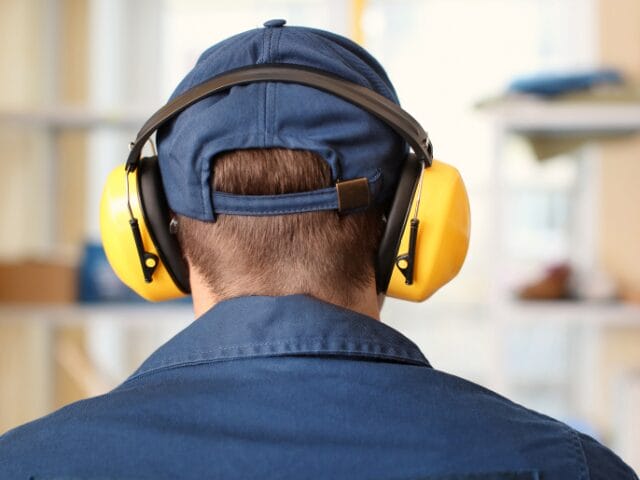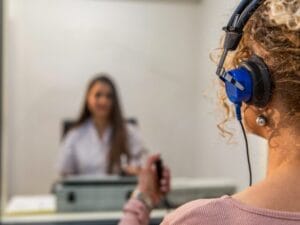
In a bustling world of machines, engines, and industrial hums, the rhythm of daily work is often accompanied by an underlying, unnoticed threat – noise. Unseen but ever-present, this sonic hazard has shaped the health of countless workers across industries, leaving a permanent mark in the form of occupational hearing loss.
Senior Association Occupational Hygienist, Leigh-Roy van den Berg explains what employers and employees need to know about the regulatory changes and steps they can do to help minimise noise in the workplace to safeguard the health and wellbeing for everyone.
Imagine a world where sound is not just a byproduct of work, but a monitored and controlled element, essential for maintaining health and wellbeing. In Australia, under the newly evolved Regulation 58 (Reg 58), this will now become a reality.
What’s New in Regulation 58?
Under the Australian Work Health and Safety Act (WHS Act) changes have been made to Reg 58 which now requires audiometric testing be undertaken every two years for workers frequently required by their workplace to wear hearing protection. For new employees, an audiometric test is required within 3 months of commencement and every two years thereafter.
This change aims to help prevent hearing loss and to monitor hearing loss trends over time more effectively. Previously, audiometric testing was only done pre and post-employment, which did not allow for tracking hearing loss trends during long-term employment.
These regulations are now mandatory in Australia, although the state of Victoria was a step ahead, updating their regulations to include the same criteria as Reg 58 in 2017. The equivalent to Reg 58 in Victoria is known as Regulation 37.
Taking the Lead and navigating the new noise regulations?
Organisations can manage these changes by having an understanding of the inherent risk to employees and if these changes are applicable to their operations.
For employers, the most important thing to consider is what is the noise level in your business and does that warrant the need for employees to wear hearing protection. They only way to work that out is to measure the noise levels, which is the unintentional but highly beneficial purpose of the changes to Reg 58.
“Occupational hearing loss is one of the most common preventable work-related illnesses. Once acquired, it is permanent and can have a significant impact on a worker’s life.” – Leigh-Roy van den Berg
Health Risk Assessment
As a starting point, a health risk assessment to identify working groups that could potentially be at risk should be performed. A qualified occupational hygienist will observe all tasks, processes, and procedures and make a qualitative determination of whether these working groups are at risk.
If the occupational hygienist determines that certain workgroups (i.e. similar exposure groups) are potentially at risk, they will advise that a noise survey be completed at your undertaking.
Noise Survey
A noise survey involves measuring noise levels of potentially high-risk occupations to determine the level of risk. A noise survey will identify equipment, activities, and processes that may cause excessive noise exposure, will determine compliance with statutory requirements, and assess the effectiveness of existing noise control measures. It helps identify workgroups exposed to harmful noise levels, evaluate the effectiveness of hearing protection, and assist in selecting appropriate hearing protectors when other measures are impractical or require time to implement.
In addition, this survey will provide senior management with specific information to decide on necessary measures to reduce noise exposure.
Two main methods are commonly used in noise surveys:
- Sound Level Meter: This handheld device measures the noise level at a specific location and time. It’s useful for identifying noise sources and assessing the effectiveness of noise control measures.
- Noise Dosimetry: This method involves using a dosimeter, which is worn by workers to measure their noise exposure over a work shift. It provides a comprehensive assessment of an individual’s exposure to noise throughout their working day.
Recommendations
Based on the results of the noise survey, recommendations will be made to help identify what controls will be selected, considering the ‘Hierarchy of Controls’, to minimise the risk of noise. The most effective way to control risks is to eliminate them, and if that isn’t reasonable, then you must minimise them so far as is reasonably practicable.
There are lots of ways to control risks, and using a combination of controls under the ‘Hierarchy of Control Measures’ is best practice before defaulting to hearing protection for employees.
Those identified as high-risk occupations will be recommended for audiometric testing.
Debunking a myth – why is hearing protection a last resort for noise protection?
Personal protective equipment (PPE) is the last resort in the hierarchy of control because it is the least effective means of controlling noise exposure due to the human element, as employees may not fit the protection correctly or consistently when using it.
Proper fit testing is essential to ensure that hearing protection is effective. Fit testing hearing protection is like checking the seal on a submarine. Even if the submarine passes all the tests for watertightness, if the hatch isn’t closed properly before diving, the tests become irrelevant. Similarly, even if hearing protection passes fit testing, its protection is compromised if it’s not worn correctly.
Where can I find out more?
Navigating the complexities of noise control is best done with an experienced professional. Tetra Tech Coffey’s Certified Occupational Hygienists can help workplaces through the changes to Reg 58 – audiometry. From conducting health risk assessments to performing noise surveys and noise exposure assessments, our team can support workplaces adopt recommendations and changes to ensure the safety and wellbeing of their employees.
Connect with a Tetra Tech Coffey Certified Occupational Hygienists:
Dean Gleeson | NSW/QLD/VIC/SA | [email protected] | +61 427 922 681
Richard Wilkinson | NSW/QLD/VIC/SA | [email protected] | +61 413 945 538
Leigh-Roy van der Berg | WA/NT | [email protected] | +61 418 891 928
